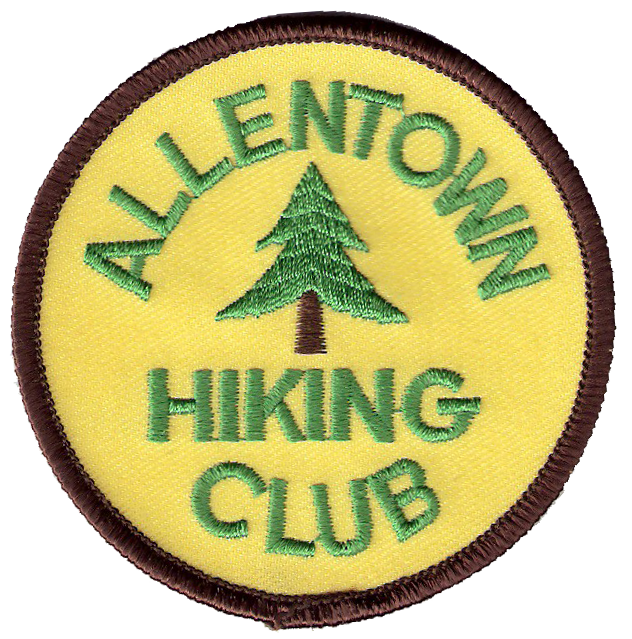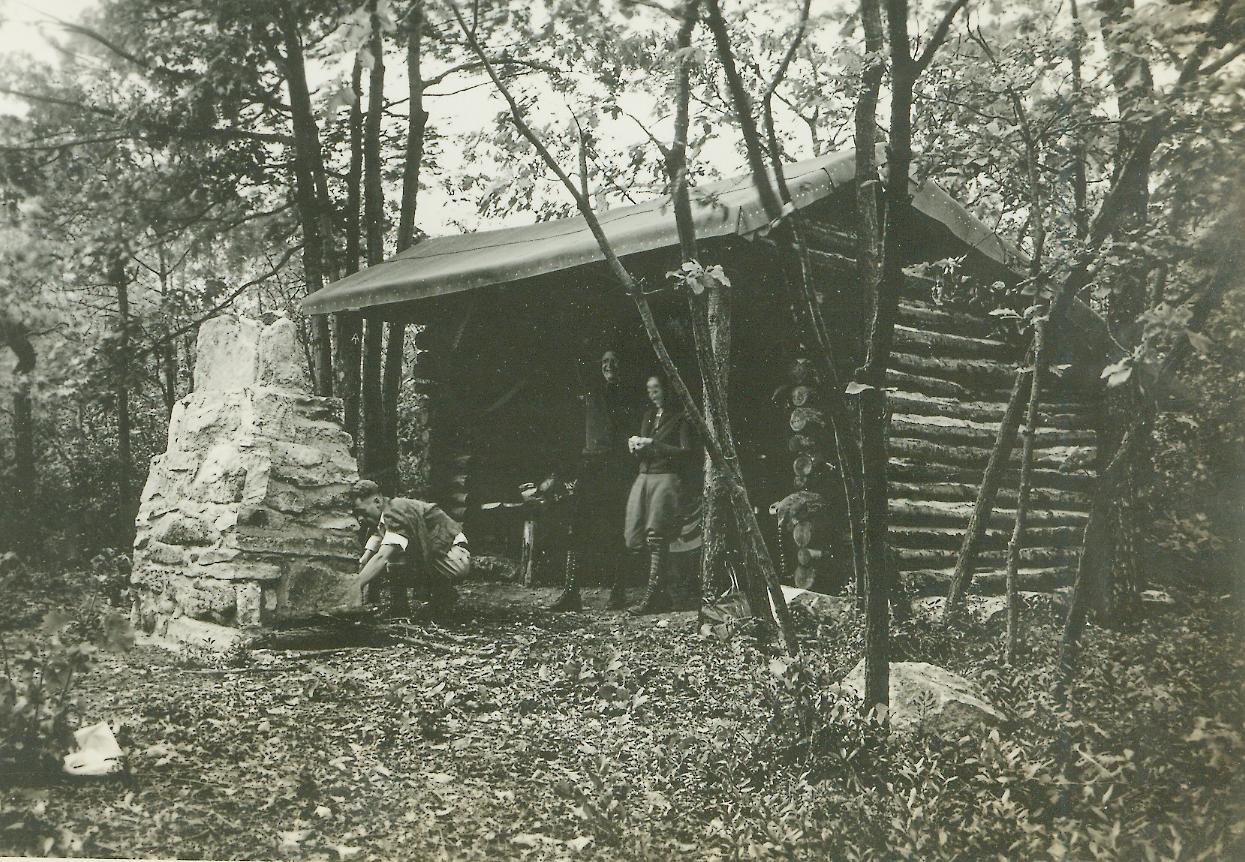

Allentown Hiking Club
Building a "Cabin" on the Appalachian Trail
An Allentown Hiking Club History
by Barbara L. Wiemann
by Barbara L. Wiemann
As related in the first installment of this anniversary history, the club assumed responsibility for the section of the Appalachian Trail from present day PA 309 to Tri County corner in December 1931. The need for accommodations for overnight trampers soon became a club concern. As listed in the 1934 Appalachian Trail guidebook, the nearest hiking club built shelter going north on the AT was east of Wind Gap (the Blue Mt. Club Shelter) and the closest to the south, west of PA 183, was the Hertlein Cabin of the Blue Mountain Eagle Climbing Club.
At the January 1935 club meeting, President John Leibig "spoke about getting a shelter for the Trail," and appointed a committee to "work towards building it." Committee Chair Walter Benning presented information on two possible locations under consideration: the present day New Tripoli Campsite and the site where the Allentown Shelter now sits.

The site above the Wannamaker Road was ultimately selected because it was on the section that the club maintained. Permission to use the shelter site was obtained from the landowner, Mr. Stoudt, a mill owner of New Ringgold on the north side of the mountain. The Blose estate owned the spring, and permission to use and improve the area around the spring was obtained.
With permissions in hand, the real work began on March 10. A party of 12 cleared the underbrush at the shelter site, cleaned the spring, and cut a trail from the shelter to the spring. The shelter was intentionally sited "an eight minutes distance" from the spring to prevent contamination from careless shelter users.
On ten Sundays during April, May, and June, club members trekked to the site and felled 75 trees that were stacked to become the walls of the three-sided Adirondack style lean-to. Mr. Stoudt graciously used his team to haul in the roofing material (the tar paper rolls weighed 90 pounds!), and after two more work days, the shelter was under cover.
In a report published in the October 1, 1935, AHC Trail-O-Gram, Benning noted that "during the cooler weather the southern approach was used, but when it became warmer it was easier, although somewhat longer, to climb the mountain from the north. To our lady hiking companions shall praise be given here, for the beautiful job they did of clearing the trail from the shelter to the spring, while the men were busy cutting down trees." His report also shows that during the 12 construction trips, 29 club members contributed 949 hours of labor. (With a 1935 club membership of 62, almost half of AHC members participated in this club project.)
After taking a summer break, the walls were chinked with cement, which club members carried up the mountain in loads weighing up to 50 pounds. Since the spring went dry (it still does!), members also hauled all the water from the foot of the mountain.
By the time of his January 1, 1936, report, Benning could declare the shelter complete. After the construction of a fireplace at the open front of the shelter, a spring dedication was planned.
The construction of this shelter stood the test of time. In 1969, four wire bunks replaced the dirt floor where hikers slept, and in 1973, a work crew built a wooden floor. But time took its toll, and in early spring of 1997, after protecting hikers for nearly 62 years, the structure was torn down to make way for the current Allentown Shelter.
In 1937, after considering the possibility of assuming responsibility for the AT between Lehigh and Little Gaps, AHC decided to concentrate its efforts on its section around the new shelter. (If the club had assumed this new section, today we could be maintaining the famous "moon walk"). However, in future years, AHC would respond affirmatively when asked to assume other AT duties.
On December 2, 1941, its tenth anniversary, the club was an organization fulfilling its mission and looking forward to its second decade. Little did members know that, in five days, national events would imperil the club's existence.